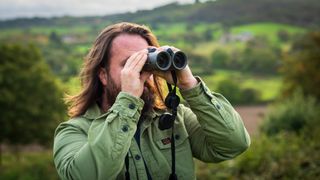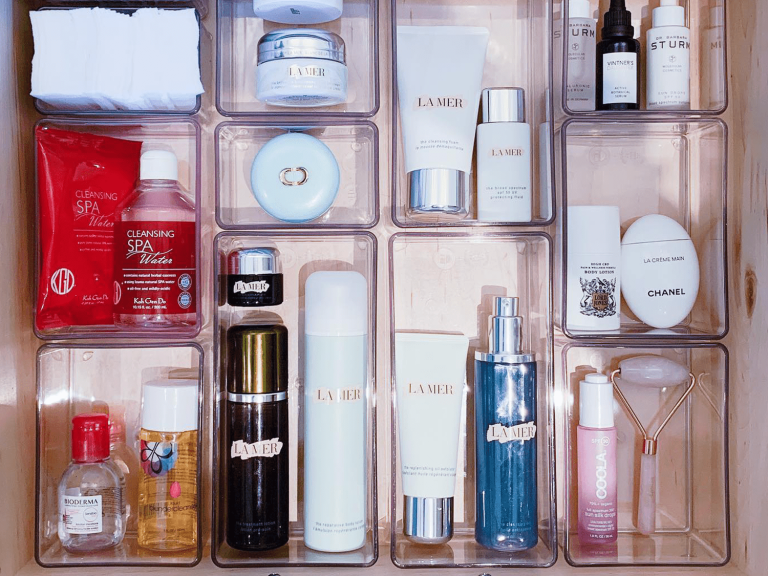9 Best Binoculars for Bird Watching: Top Picks for Every Budget
Bird watching is a captivating hobby that lets you connect with nature in a unique way. Whether you’re a seasoned birder or just starting out, having the right binoculars can make all the difference in your experience. The right pair will bring those feathered wonders into sharp focus, turning a distant speck into a detailed marvel.
Choosing the best binoculars for bird watching can be overwhelming with so many options on the market. You need something that balances clarity, comfort, and durability. In this guide, we’ll explore the nine best binoculars that cater to bird watchers of all levels, helping you make an informed decision and elevate your birding adventures.
Magnification Power: Bigger Isn’t Always Better
When choosing binoculars for bird watching, understanding magnification power is crucial. High magnification sounds appealing, but it has its drawbacks.
Understanding Magnification in Bird Watching
Magnification determines how much closer an object appears. For bird watching, you’ll commonly see “8×42” or “10×42” binoculars. The first number (8 or 10) represents the magnification power. While higher magnification brings birds closer, it also narrows your field of view and can make the image less stable.
Pros and Cons of High Magnification
Using high magnification binoculars (like 10x or higher) has its advantages. They let you see distant birds in greater detail. However, they reduce the field of view, making it harder to locate and track birds, especially fast-moving ones. High magnification can also result in a shakier image, requiring a steadier hand or even a tripod. Opting for moderate magnification like 8x often strikes a better balance for most bird watchers.
Lens Quality and Clarity
Lens quality significantly impacts your bird-watching experience. High-quality lenses can make all the difference in seeing fine details and vibrant colors.
Importance of Objective Lens Diameter
Objective lens diameter matters more than you think. Larger diameters (e.g., 42mm or 50mm) allow more light into the binoculars, providing a brighter image even in low-light conditions. They’re perfect for dawn or dusk bird watching. On the flip side, larger lenses add to the binoculars’ weight, which might be cumbersome during long bird watching sessions. Aim for a balance between brightness and portability.
The Role of Lens Coatings
Lens coatings enhance light transmission and reduce glare. Fully multi-coated lenses deliver the best performance by applying multiple layers of anti-reflective coating to all air-to-glass surfaces. This feature improves image brightness and color fidelity. Some binoculars also have special coatings for better contrast and clarity. Always check for fully multi-coated optics for superior viewing experiences.
Size and Weight Considerations
When considering binoculars for bird watching, you must think about their size and weight to ensure comfort during extended use.
Finding the Balance Between Size and Functionality
Choosing the right size balances ease of use and optical performance. Larger binoculars usually offer better image stability and light-gathering ability, making them ideal for low-light conditions. However, they can be cumbersome and heavy, which may lead to fatigue during prolonged birding sessions.
Benefits of Compact Binoculars
Compact binoculars are lightweight and easy to carry, making them perfect for long hikes or travel. These models fit easily into small bags or even pockets, allowing you to move through different terrains effortlessly. However, their smaller lenses might not perform as well in low-light conditions, so they are better suited for well-lit environments.
Field of View: A Crucial Component
How Field of View Enhances Bird Watching
Field of view (FOV) significantly impacts your bird watching experience. A wider FOV allows you to see more of your surroundings without moving the binoculars. This is essential for tracking fast-moving birds or observing larger flocks. For example, a binocular pair with a 420 feet at 1,000 yards FOV provides a broader perspective compared to one with a 300 feet at 1,000 yards FOV. This means you can spot birds more quickly and comfortably, enhancing your overall bird watching experience.
Comparing Field of View Among Top Models
Different binocular models offer varying FOVs, which can influence your choice. For instance, the Nikon Monarch 7 offers an impressive 420 feet at 1,000 yards FOV, making it ideal for catching glimpses of distant birds. On the other hand, the Vortex Diamondback HD has a FOV of 362 feet at 1,000 yards, which is also commendable and suits a wide range of birding activities. When comparing models, always check their FOV specifications to find one that matches your bird watching needs. Here’s a simple comparison:
| Model | Field of View (ft at 1,000 yds) |
|---|---|
| Nikon Monarch 7 | 420 |
| Vortex Diamondback HD | 362 |
| Celestron Nature DX | 388 |
Evaluating these FOVs can help you make an informed decision, ensuring you have the best tool to observe and enjoy bird watching.
Focus Capability and Ease of Adjustment
When you’re bird watching, having binoculars that are easy to adjust can make or break your experience. Smooth focusing mechanisms and fast focus capabilities are key aspects to consider.
Importance of Fast Focus
Quick focusing is crucial in bird watching. Birds move rapidly, and you need to keep up with their swift movements. Binoculars like the Vortex Viper HD, which feature a fast focus mechanism, allow you to lock onto birds quickly. This ensures you don’t miss out on observing key details. Trusted bird watching brands often highlight their fast focus systems, showcasing how they perform in varying conditions.
Close Focus for Bird Watching at Short Distances
Close focus is essential for observing nearby birds, especially smaller species. The ability to focus on objects just a few feet away can help you get detailed views of bird plumage and behavior. Binoculars like the Swarovski EL and Zeiss Victory SF excel in close focus, often providing a minimum focus distance of around 5 to 6 feet. This is ideal for birders who enjoy watching feeders or bird nests. Always check the close focus specifications to ensure your binoculars meet your specific needs.
Durability and Weather Resistance
Bird watching often involves unpredictable weather and challenging terrains. The durability and weather resistance of your binoculars can make a significant difference in your experience.
Waterproof and Fog-proof Features
Ensure your binoculars are waterproof with O-ring seals to keep moisture out. This feature prevents internal fogging, which can be a major issue in humid conditions. Additionally, nitrogen or argon gas purging inside the binoculars helps maintain clear vision regardless of temperature changes. Brands like Nikon and Bushnell offer models with these protections, ensuring uninterrupted bird watching even in wet environments.
The Impact of Rugged Construction
Select binoculars with rugged construction to withstand rough handling and accidental drops. Look for models with rubber armor coating, which not only provides a better grip but also absorbs shocks. Materials like polycarbonate or magnesium alloy provide durability without adding unnecessary weight. Opt for products from brands like Leica and Vortex, known for their sturdy designs that last through years of use in the field.
Price Versus Performance
Finding Value in Mid-Range Models
Mid-range binoculars often offer the best balance between cost and quality. These models typically feature good optics, decent build quality, and essential features like waterproofing and fog-proofing. Brands like Nikon and Bushnell provide excellent mid-range options that deliver sharp images and durable design. For instance, Nikon Monarch 5 and Bushnell Legend Ultra HD are popular choices among bird watchers for their clear views and affordability. You don’t need to break the bank to enjoy bird watching with a reliable pair of binoculars.
When to Invest in High-End Binoculars
High-end binoculars justify their price tag with superior optics and advanced features. Brands like Swarovski, Zeiss, and Leica are known for their exceptional image clarity, vibrant colors, and low-light performance. If you’re a dedicated bird watcher or participate in birding competitions, investing in high-end models may be worth it. Swarovski EL and Zeiss Victory SF offer unparalleled optical quality and durability. These binoculars provide a more immersive bird watching experience, making every detail of the plumage and behavior stand out.
Top 9 Binoculars for Bird Watching
When it comes to bird watching, selecting the right binoculars can make a big difference. Here are the top 9 binoculars to enhance your bird-watching experience.
Review of Each Recommended Model
- Vortex Viper HD 10×42: Offers high-definition optics for clear and bright images. Lightweight and waterproof, making it suitable for various weather conditions.
- Swarovski EL 8.5×42: Known for its exceptional optical performance and ergonomic design. Features a robust build that ensures long-lasting use in the field.
- Zeiss Victory SF 10×42: Delivers outstanding clarity and a wide field of view. Fast focus mechanism helps in quick target acquisition.
- Nikon Monarch 5 8×42: Provides excellent light transmission and is highly durable. It’s an affordable option without compromising on quality.
- Bushnell Legend Ultra HD 10×42: Offers superior image clarity and contrast. Waterproof and fog-proof design makes it ideal for harsh conditions.
- Leica Ultravid HD-Plus 8×42: Known for its brilliant colors and sharpness. Durable and lightweight, perfect for extended bird-watching sessions.
- Celestron Nature DX 8×42: A budget-friendly option with fully multi-coated lenses. It’s lightweight and ergonomic, making it easy to use for beginners.
- Pentax AD 8×25 WP: Compact and highly portable with a great optical performance for its size. Waterproof design adds durability.
- Athlon Midas 8×42: Offers excellent clarity and sharp images. Features an ergonomic design and is waterproof and fog-proof, providing versatility in various conditions.
- Consider Magnification and FOV: Higher magnification like 10×42 offers detailed views, while 8×42 models provide a wider field of view, crucial for tracking birds in motion.
- Evaluate Weight and Durability: Choose models like Leica Ultravid HD-Plus 8×42 for portability or Nikon Monarch 5 8×42 for robust build quality.
- Check Optical Quality: Brands like Swarovski and Zeiss are renowned for superior optics. Consider these if high image clarity is a top priority.
- Budget Considerations: If you’re on a budget, options like Celestron Nature DX 8×42 and Pentax AD 8×25 WP offer good performance without breaking the bank.
- Weather Resistance: Models such as Vortex Viper HD 10×42 and Bushnell Legend Ultra HD 10×42 are excellent for use in various weather conditions due to their waterproof and fog-proof features.
Choosing the right binoculars from these top picks will significantly enhance your bird-watching experience.
Conclusion
Choosing the right binoculars can significantly enhance your bird-watching experience. Whether you’re a beginner or a seasoned birder, investing in quality optics is essential. Consider your specific needs, such as magnification, field of view, and durability, to find the perfect fit. Brands like Vortex, Swarovski, and Zeiss offer top-tier performance, while mid-range options like Nikon and Bushnell provide excellent value. By weighing these factors, you can select binoculars that will bring you closer to nature and make every bird-watching adventure more enjoyable. Happy birding!






